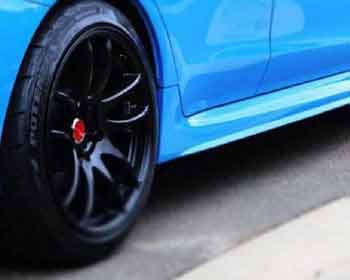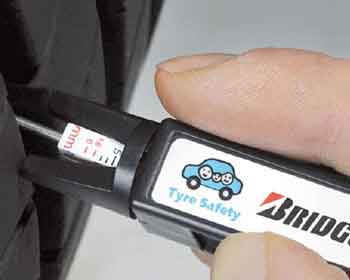When was the last time you replaced your sneakers?

Tyres: your car’s sneakers
We've all had a pair of reliable shoes that lasted well beyond their years. Eventually though, they lose their grip, become slippery, the rubber wears through under your heels or you wear a hole in the toe-end.
In many ways, our tyres are like the sneakers our cars get around in. They too wear down, lose grip, grow uncomfortable and might even become dangerous in the wet.
But holding off on buying new shoes for your car until you’ve squeezed every last kilometre out of them isn’t always the best plan.
Splashing out on new sneakers
Every now and then a new sneaker will be released that sends people lining up around the block with people keen to get their hands on the very first pairs. We’re not saying that buying a new set of tyres is quite this exciting, but they do play a big role in the safety of your car.
Buying a new set of tyres can be a costly exercise depending on the car you drive, but you’re receiving very good value over the tens of thousands of kilometres you’ll travel on them. Today’s tyres offer longer life, significantly improved safety, and more impressive performance than we’ve ever come to expect from rubber tyres of the past.
When to switch out your car’s shoes
OK, analogies aside. There's no hard-and-fast rule to determine how long tyres last. Generally speaking, you should have your tyres inspected five years from the date of manufacture, regardless of tread depth. This is because the rubber compound and oils in tyres deteriorate over time and can affect tyre performance.
Also, tyres should be replaced if you've clocked up a lot of kilometres and your tyre tread is wearing down. When your tyre tread depth reaches just 3mm your wet grip is dramatically reduced, and your braking distance is affected.
Look for signs of significant cracking in the tread grooves or sidewall or bulging of the tread face or sidewall. These are sure signs your tyres have reached the end of their life.
Factors that take a toll on tyres
How your tyres wear depends on a combination of many things including driving style, tyre manufacturing materials and design: a high performance tyre may wear faster than a tyre designed for comfort.
Driving habits are a major factor in tyre life. Constant hard braking, fast cornering and rapid acceleration are quick ways to wear tyres.
Impact with kerbs can damage the tyre sidewall and lack of tyre maintenance can also see tyres wear prematurely. Factors such as extreme heat, rough or unsealed roads and potholes all contribute to tyre damage and replacement.
If there’s any question about the roadworthiness of your tyres, please consult an expert at your local Bridgestone Tyre Store.
Maintenance makes a difference
Some simple tyre maintenance will help get longevity out of your tyres and could save you trouble further down the line. Driving on neglected tyres could lead to problems with your braking, handling and fuel efficiency.
Here’s how you check the condition of your tyres:
Check tyre appearance
Inspect each of the tyres and make sure there aren’t any cuts, tears or bulges on any of them, or that there’s no significant cracking of the rubber in the tread grooves.
Check tyre tread depth
You can simply check the tread depth of your tyres by looking at the tread wear indicator bars moulded into the tyre tread. These are found at the bottom of the tread grooves around the tyre. When the tyre is worn to the point where any of the bars become equal with the adjacent tread, your tyre may be deemed unroadworthy. Or, use our simple 20 cent coin test to check on your tyres’ tread.
Check tyre pressure
Your tyre pressure is essential to keeping you safe. Too much or too little air in your tyres will cause uneven or excessive wear over time. It’s a good idea to check every four weeks. Look inside the driver’s door, glove box cover or near the petrol cap for your vehicle manufacturer’s recommended tyre pressure.
Tyre rotation for even wear
Different vehicles wear tyres at different rates. For example, a front-wheel drive car will wear tyres very differently to a rear-wheel drive. One of the best ways you can look after your tyres is by rotating them regularly, about every 5000km even if there is no sign of uneven wear.
It’s all about safety
It’s easy to lose sight of the simple truth that tyres are one of the most critical safety features of your car and provide safer motoring for you and your family.
See why safety is at the heart of everything we do.
When did you last check on your “sneakers”, is it time to change yours? Do you have your own trick for knowing when it’s time to replace them? Let us know in the comments below, or join the conversation on Facebook.

Bridgestone Insider brings you all the latest updates, expert advice and guides from the team at Bridgestone New Zealand


